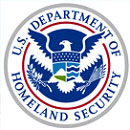Chemical Facility Anti-Terrorism Standards (CFATS)

Last Published Date: May 13, 2015
The Chemical Facility Anti-Terrorism Standards (CFATS) program identifies and regulates high-risk chemical facilities to ensure they have security measures in place to reduce the risks associated with these chemicals.
Initially authorized by Congress in 2007, the program uses a dynamic multi-tiered risk assessment process and requires facilities identified as high-risk to meet and maintain performance-based security standards appropriate to the facilities and the risks they pose.
DHS chemical security inspectors work in all 50 states to help ensure facilities have security measures in place to meet CFATS requirements.
CFATS Act of 2014
On December 18, 2014, the President signed into law the Protecting and Securing Chemical Facilities from Terrorist Attacks Act of 2014 (“the CFATS Act of 2014”), which recodifies and reauthorizes the CFATS program for four years.
This new legislation lays the foundation for the continued maturation of the CFATS program, adding new provisions while preserving most of the existing regulations. Significantly, it establishes an expedited approval program, which may allow chemical facilities in Tiers 3 and 4 to move to an approved site security plan more quickly.
The Department issued Guidance for the Expedited Approval Program in May 2015.
Development of the Interim Final Rule
The U.S. Department of Homeland Security has released an interim final rule that imposes comprehensive federal security regulations for high-risk chemical facilities.
This rule establishes risk-based performance standards for the security of our nation’s chemical facilities. It requires covered chemical facilities to prepare Security Vulnerability Assessments, which identify facility security vulnerabilities, and to develop and implement Site Security Plans, which include measures that satisfy the identified risk-based performance standards.
It also allows certain covered chemical facilities, in specified circumstances, to submit Alternate Security Programs in lieu of a Security Vulnerability Assessment, Site Security Plan, or both.
Although Section 550 of the DHS Appropriations Act of 2007 gives the Secretary of the Department of Homeland Security the authority to issue interim final regulations without prior notice and comment, the Department of Homeland Security chose to release an Advance Notice of Rulemaking (ANRM) on December 21, 2006; this notice sought comments on the proposed text for the interim final rule as well as on various implementation and policy issues related to the chemical security program. The Department received numerous and helpful comments from a variety of stakeholders, analyzed these recommendations, and incorporated many of them in the Interim Final Rule.
Read more on Facilities covered by the Chemical Security Anti-Terrorism Standards.
Read more about how the Appendix A: Chemicals of Interest list was developed.






